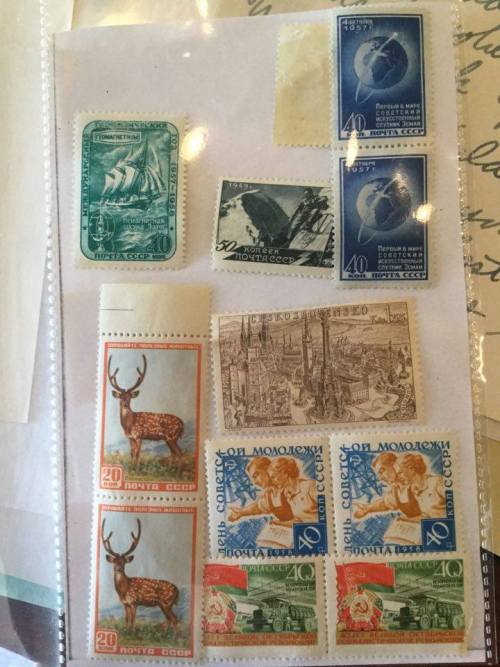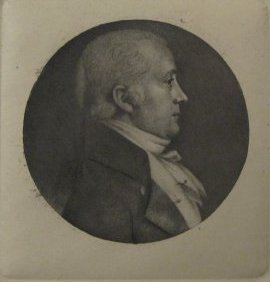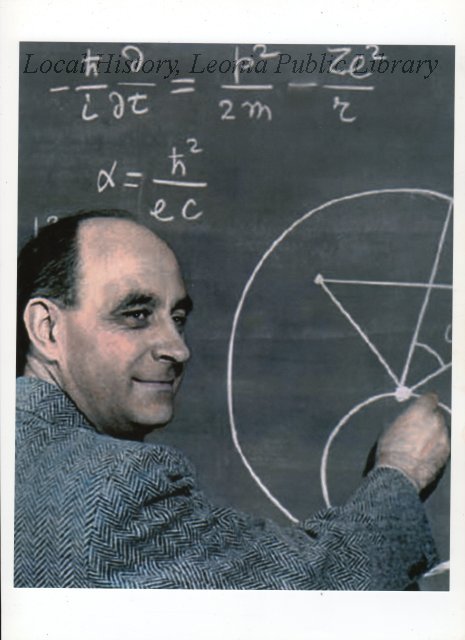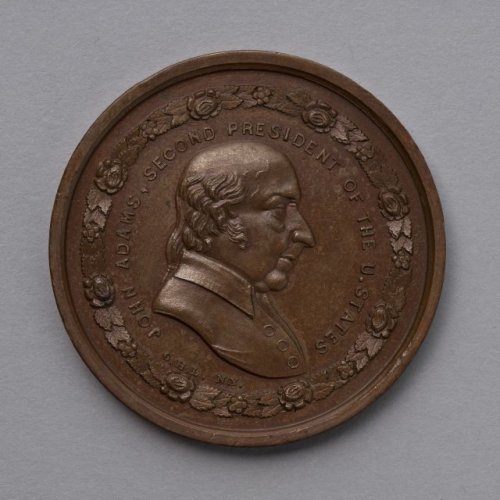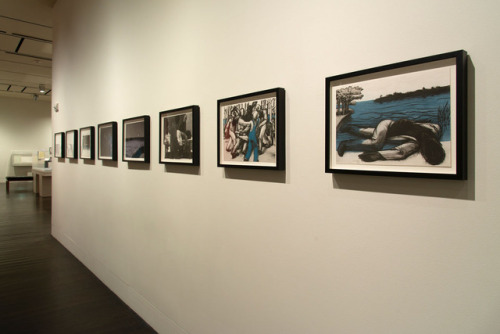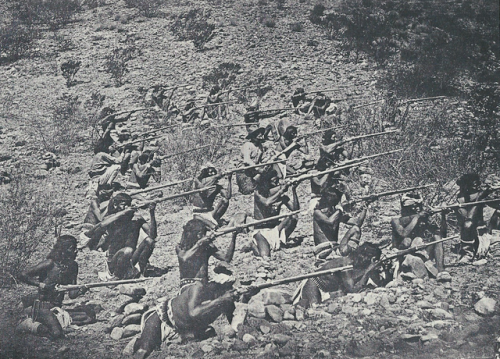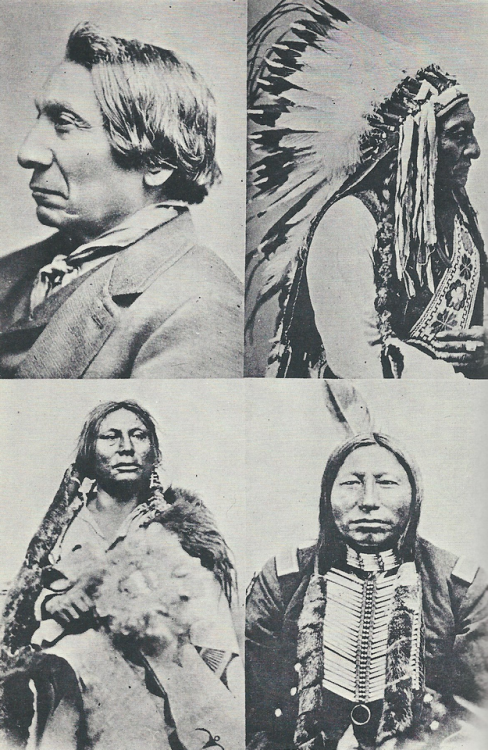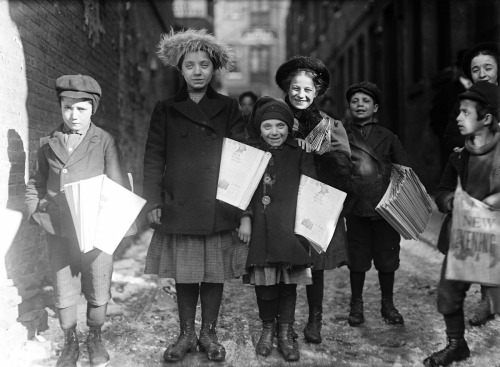#american history
At my internship I have to open a lot of dead people’s mail. These stamps were sent to Adlai E. Stevenson’s secretary from a friend traveling around Russia in 1958. (click to make the pictures larger)
Post link
The King of Camelot.

November 3, 1948 - Newspaper mistakenly declares “Dewey Defeats Truman”
“On November 3, 1948, the Chicago Tribune jumps the gun and mistakenly declares New York Governor Thomas Dewey the winner of his presidential race with incumbent Harry S. Truman in a front-page headline: “Dewey Defeats Truman.”
Many of America’s major newspapers had predicted a Dewey victory early on in the campaign. A New York Times article editorialized that “if Truman is nominated, he will be forced to wage the loneliest campaign in recent history.” Perhaps not surprisingly then, Truman chose not to use the press as a vehicle for getting his message across. Instead, in July 1948, he embarked on an ambitious 22,000-mile “whistle stop” railroad and automobile campaign tour.
At every destination, Truman asked crowds to help him keep his job as president. His eventual success in the election of 1948 has been largely attributed to this direct interaction with the public and his appeal to the common voters as the political “underdog.” At the end of one of his campaign speeches, voices in the crowd could be heard yelling “Give ’em Hell, Harry!” It didn’t take long for the phrase to catch on and become Truman’s unofficial campaign slogan.
In a now famous photograph snapped in the early morning hours after the election, a beaming and bemused Truman is shown holding aloft the Chicago Tribune issue that had wrongly predicted his political downfall. Truman defeated Dewey by 114 electoral votes.”
This week in History:
October 31, 1926 - Harry Houdini dies
November 1, 1800 - John Adams moves into White House
November 2, 1947 - Howard Hughes’s “Spruce Goose” flies
November 3, 1903 - Panama declares independence from Columbia
November 4, 1922 - Entrance to King Tut’s tomb discovered
November 5, 1940 - FDR re-elected for third term
November 6, 1860 - Abraham Lincoln elected president
These two newspapers (the original “Dewey Defeats Truman” and the retraction printing the next day) can be found in the online collectionofKentucky Historical Society.
Post link
September 1, 1807 - Aaron Burr acquitted of Treason
“Former U.S. vice president Aaron Burr is acquitted of plotting to annex parts of Louisiana and Spanish territory in Mexico to be used toward the establishment of an independent republic. He was acquitted on the grounds that, though he had conspired against the United States, he was not guilty of treason because he had not engaged in an “overt act,” a requirement of the law governing treason. Nevertheless, public opinion condemned him as a traitor, and he fled to Europe.
Aaron Burr, born into a prestigious New Jersey family in 1756, graduated from the College of New Jersey (later Princeton) at the age of 17. He joined the Continental Army in 1775 and distinguished himself during the Patriot attack on Quebec. A masterful politician, he was elected to the New York State Assembly in 1783 and later served as state attorney. In 1790, he was elected to the U.S. Senate. In 1796, Burr ran for the vice presidency on Thomas Jefferson’s Democratic-Republican ticket (the forerunner of the Democratic Party), but the Federalist John Adams won the presidency. Burr left the Senate and returned to the New York Assembly.
In 1800, Jefferson again chose Burr as his running mate. Under the electoral procedure then prevailing, president and vice president were not voted for distinctly; the candidate who received the most votes was elected president, and the second in line, vice president. Jefferson and Burr each won 73 votes, and the election was sent to the House of Representatives. What at first seemed but an electoral technicality–handing Jefferson victory over his running mate–developed into a major constitutional crisis when Federalists in the lame-duck Congress threw their support behind Burr. After a remarkable 35 tie votes, a small group of Federalists changed sides and voted in Jefferson’s favor.
Burr became vice president, but Jefferson grew apart from him, and he did not support Burr’s renomination to a second term in 1804. That year, a faction of New York Federalists, who had found their fortunes drastically diminished after the ascendance of Jefferson, sought to enlist the disgruntled Burr into their party and elect him governor. Burr’s old political antagonist Alexander Hamilton campaigned against him with great fervor, and he lost the Federalist nomination and then, running as an independent for governor, the election. In the campaign, Burr’s character was savagely attacked by Hamilton and others, and after the election he resolved to restore his reputation by challenging Hamilton to a duel, or an “affair of honor,” as they were known.
Affairs of honor were commonplace in America at the time, and the complex rules governing them usually led to a resolution before any actual firing of weapons. In fact, the outspoken Hamilton had been involved in several affairs of honor in his life, and he had resolved most of them peaceably. No such recourse was found with Burr, however, and on July 11, 1804, the enemies met at 7 a.m. at the dueling grounds near Weehawken, New Jersey.
There are conflicting accounts of what happened next. According to Hamilton’s “second”—his assistant and witness in the duel—Hamilton decided the duel was morally wrong and deliberately fired into the air. Burr’s second claimed that Hamilton fired at Burr and missed. What happened next is agreed upon: Burr shot Hamilton in the stomach, and the bullet lodged next to his spine. Hamilton was taken back to New York, and he died the next afternoon.
Few affairs of honor actually resulted in deaths, and the nation was outraged by the killing of a man as eminent as Alexander Hamilton. Charged with murder in New York and New Jersey, Burr, still vice president, returned to Washington, D.C., where he finished his term immune from prosecution.
In 1805, Burr, thoroughly discredited, concocted a plot with James Wilkinson, commander-in-chief of the U.S. Army, to seize the Louisiana Territory and establish an independent empire, which Burr, presumably, would lead. He contacted the British government and unsuccessfully pleaded for assistance in the scheme. Later, when border trouble with Spanish Mexico heated up, Burr and Wilkinson conspired to seize territory in Spanish America for the same purpose.
In the fall of 1806, Burr led a group of well-armed colonists toward New Orleans, prompting an immediate U.S. investigation. General Wilkinson, in an effort to save himself, turned against Burr and sent dispatches to Washington accusing Burr of treason. In February 1807, Burr was arrested in Louisiana for treason and sent to Virginia to be tried in a U.S. court. On September 1, he was acquitted on a technicality. Nevertheless, the public condemned him as a traitor, and he went into exile to Europe. He later returned to private life in New York, the murder charges against him forgotten. He died in 1836.”
This week in History:
August 29, 1876 - Charles F. Kettering, inventor of the electric self-starter, is born
August 30, 1983 - Guion S. Blueford becomes first African-American to travel to space
August 31, 1897 - Thomas Edison patents the Kinetograph
September 1, 1985 - Wreck of Titanic Found
September 2, 1945 - Japan surrenders, bringing an end to WWII
September 3, 1783 - Treaty of Paris signed
September 4, 1951 - President Truman makes first transcontinental television broadcast
Thisengraving of Aaron Burr can be found in the online collection of the Fraunces Tavern Museum.
Post link
December 2, 1942 - Physicist Enrico Fermi produces the first nuclear chain reaction
“Enrico Fermi, the Italian-born Nobel Prize-winning physicist, directs and controls the first nuclear chain reaction in his laboratory beneath the bleachers of Stagg Field at the University of Chicago, ushering in the nuclear age. Upon successful completion of the experiment, a coded message was transmitted to President Roosevelt: “The Italian navigator has landed in the new world.”
Following on England’s Sir James Chadwick’s discovery of the neutron and the Curies’ production of artificial radioactivity, Fermi, a full-time professor of physics at the University of Florence, focused his work on producing radioactivity by manipulating the speed of neutrons derived from radioactive beryllium. Further similar experimentation with other elements, including uranium 92, produced new radioactive substances; Fermi’s colleagues believed he had created a new “transuranic” element with an atomic number of 93, the result of uranium 92 capturing a neuron while under bombardment, thus increasing its atomic weight. Fermi remained skeptical about his discovery, despite the enthusiasm of his fellow physicists. He became a believer in 1938, when he was awarded the Nobel Prize in physics for “his identification of new radioactive elements.” Although travel was restricted for men whose work was deemed vital to national security, Fermi was given permission to leave Italy and go to Sweden to receive his prize. He and his wife, Laura, who was Jewish, never returned; both feared and despised Mussolini’s fascist regime.
Fermi immigrated to New York City–Columbia University, specifically, where he recreated many of his experiments with Niels Bohr, the Danish-born physicist, who suggested the possibility of a nuclear chain reaction. Fermi and others saw the possible military applications of such an explosive power, and quickly composed a letter warning President Roosevelt of the perils of a German atomic bomb. The letter was signed and delivered to the president by Albert Einstein on October 11, 1939. The Manhattan Project, the American program to create its own atomic bomb, was the result.
It fell to Fermi to produce the first nuclear chain reaction, without which such a bomb was impossible. He created a jury-rigged laboratory with the necessary equipment, which he called an “atomic pile,” in a squash court in the basement of Stagg Field at the University of Chicago. With colleagues and other physicists looking on, Fermi produced the first self-sustaining nuclear chain reaction and the “new world” of nuclear power was born.”
This week in History:
November 29, 1942 - Coffee rationing begins
November 30, 1864 - Battle of Franklin, Tennessee
December 1, 1955 - Rosa Parks ignites bus boycott
December 2, 1777 - Philadelphia nurse Lydia Darragh overhears British plans to attack Washington’s army
December 3, 1967 - First human heart transplant (1818- Illinois becomes the 21st state)
December 4, 1783 - George Washington bids farewell to his officers
December 5, 1933 - 21st amendment is ratified; Prohibition ends
This photograph of Enrico Fermi can be found in the online collection of the Leonia Public Library.
Post link
June 3, 1800 - President John Adams moves into tavern in Washington D.C.
“John Adams, the second president of the United States, becomes the first president to reside in Washington, D.C., when he takes up residence at Union Tavern in Georgetown.
The city of Washington was created to serve as the nation’s capital because of its geographical position in the center of the existing new republic. The states of Maryland and Virginia ceded land around the Potomac River to form the District of Columbia, and work began on Washington in 1791. French architect Pierre Charles L'Enfant designed the city’s radical layout, full of dozens of circles, crisscross avenues, and plentiful parks. In 1792, work began on the neoclassical White House building at 1600 Pennsylvania Avenue under the guidance of Irish-American architect James Hoban, whose White House design was influenced by Leinster House in Dublin and by a building sketch in James Gibbs’ Book of Architecture. In the next year, Benjamin Latrobe began construction on the other principal government building, the U.S. Capitol.
On June 3, 1800, President Adams moved to a temporary residence in the new capital as construction was completed on the executive mansion. On November 1, the president was welcomed into the White House. The next day, Adams wrote to his wife about their new home: “I pray heaven to bestow the best of blessings on this house, and on all that shall hereafter inhabit it. May none but wise men ever rule under this roof!” Soon after, Abigail Adams arrived at the White House, and on November 17 the U.S. Congress convened for the first time at the U.S. Capitol.
During the War of 1812, both buildings were set on fire in 1814 by British soldiers in retaliation for the burning of government buildings in Canada by U.S. troops. Although a torrential downpour saved the still uncompleted Capitol building, the White House was burned to the ground. The mansion was subsequently rebuilt and enlarged under the direction of James Hoban, who added east and west terraces to the main building along with a semicircular south portico and a colonnaded north portico. Work was completed on the White House in the 1820s and it has remained largely unchanged since.”
This week in History:
May 31, 1859 - Big Ben rings out over London for the first time
June 1, 1779 - Benedict Arnold court-martialed
June 2, 1935 - Babe Ruth retires
June 3, 1965 - Major Edward H. White II becomes first American to walk in space
June 4, 1919 - Congress passes 19th Amendment, giving women the right to vote
June 5, 1933 - FDR takes United States off gold standard
June 6, 1944 - D-Day
This medal showing the profile of President John Adams can be found in the online collection of the American Philosophical Society.
Post link
AMERICA’S FIRST SERIAL KILLER // H. H. Holmes (Herman Webster Mudgett);
born in Gilmanton, New Hampshire, Holmes was the third child to two devout Methodist parents. Holmes excelled in school which often made him the target of ridicule. When he was still young, he had a fear of doctors, which when the bullies found out, they decided to force him to stand face to face with a human skeleton and even put the skeleton’s hands on his face. After that, Holmes was cured of his fear and became fascinated with death and even picked up dissecting animals as a hobby. His fascination didn’t end there, in 1882, he enrolled in the University of Michigan’s Department of Medicine and Surgery. During his time as a student, he would steal cadavers from the lab, disfigure the bodies and then claim they were victims of an accidental killing in order to collect insurance money from policies that he took out on the deceased. It was around then he abandoned his wife and son. He also changed his name to Holmes, possibly to avoid previous scams from catching up with him.
In 1887, he married Myrta Belknap in Minneapolis, Minnesota while still married to his previous wife Clara (since 1878). He fathered a daughter with Myrtha in Englewood, Illinois. Holmes, his second wife and his daughter lived in Wilmette, Illinois together but he spent most of his time in Chicago, tending to business. In 1894, Holmes married Georgiana Toke in Denver, Colorado while still married to both Clara and Myrta. He also was reported to have a relationship with Julie Smythe, wife of on of his former employees and one of his future victims.
In 1886, Holmes began working in a drug store in Chicago. After the owner of the drugstore died, Holmes offered to buy the store from his former boss’s wife, she agreed and sold it to him. He also purchased a lot across the street and began work on the three story, block long World’s Fair Hotel which was nicknamed The Castle (and then later, The Murder Castle). The hotel was opened to be used as an inn for the World’s Columbian Exposition in 1893. The ground floor contained Holmes’ relocated drug store and various other shops while the second and third floor was a maze of windowless rooms, stairs leading to nowhere and doors that opened to brick walls. The true intent of the Castle was for murder. In order to keep anyone knowing the full floor plans, Holmes constantly fired contractors and hired new ones; letting them each only build a small part of the hotel. At the time of the opening, Holmes made all of his employees sign up for life insurance, he paid their premiums and in return, he was listed as beneficiary. His victims were mostly female employees, hotel guests and lovers.
There were a variety of torture rooms in the hotel; some were lynching rooms, some had iron walls with blow torches installed to incinerate his victims, some had gas leaking in them to asphyxiate his victims at any time. The victims bodies were then dropped down a chute to the basement where some were stripped down and made into skeleton models and then sold to medical schools.
Eventually he left Chicago, reappearing in Fort Worth, Texas, where he began to create another murder castle, only to give up halfway through. But in 1894, Holmes was briefly arrested for a horse swindle. While in jail, he struck up a conversation with a convicted train robber about his plans to fake his own death to collect insurance money. The train robber directed Holmes to a trustworthy lawyer sot hat the plan could be carried out in exchange for $500. But ultimately it failed when the insurance company became suspicious and refused to pay. Instead of pressing the claim, Holmes came up with a new, similar idea. This time he would fake the death of his criminal friend, Benjamin Pitezel. Pitezel agreed to fake his death so his wife could collect $10,000 in life insurance, which would then be split between him, Holmes and the lawyer. Pitezel was supposed to get a life insurance policy under the name of B. F. Perry, an inventor. And then he was supposed to “die” in a lab explosion. Holmes’ job was to find a body that could pass as Pitezel’s. Instead, Holmes killed Pitezel by knocking him out with chloroform and then setting his body on fire. After which, Holmes convinced Pitezel’s unsuspecting wife to give him custody of three of their children (all of which he would later kill).
The downfall of Holmes came when the train robber tipped off police about Holmes because he never received his payment. His murder spree ended in Boston on Nov.17, 1894. It was around that when a former janitor of the Castle told police how he was never allowed to clean the second floor, which led to an investigation of the hotel. They uncovered Holmes’ torture rooms, a pile of human bones, a dissection table covered in dry bloods, balls of women’s hair, women’s bloody clothing, and lime pits of skeleton remains of his victims. Holmes’ victims count is anywhere between 20 to 200. He first confessed to 100 killings but later changed it to 27 for unknown reasons. Though he also claimed he was innocent at one point and then later claimed that he was possessed by Satan. However, the eventual finding of the three murdered Pitezel children were what sealed Holmes’ fate.
On May 7, 1896, H. H. Holmes was hanged at Moyamensing Prison for the murder of Benjamin Pitezel. Up until his death, he remained calm and amiable and showed very little signs of having any fear, anxiety or depression. However, he did ask that his coffin be contained in cement and buried 10 feet deep because he was concerned that grave robbers would steal his body and dissect him. Holmes’ death was not an easy one. His neck did not snap and instead he slowly strangled to death for 15 minutes. He wasn’t pronounced dead until 20 minutes after the trap had been sprung.
In August 1895, the Murder Castle was mysteriously burned down to the ground. Some believe it was to cover up any remaining evidence that had yet been found by police while others believed it was outraged citizens wanting to rid their city of the horrible place and keep it from becoming a tourist attraction. The site is currently the Englewood Branch of the United States Postal Services.
Post link
How a former slave became the world’s first drag queen
Over 100 years before RuPaul was telling us to “sashay away”, William Dorsey Swann, who had been born into slavery in 19th Century America, was making a name for himself as the world’s first self-described “drag queen”.
LGBTQ+ historian Channing Joseph, author of House of Swann, explains how he discovered this forgotten history of one of the earliest efforts at queer resistance and liberation in America.
Visit BBC for the video by Alva French with animation by Dan John
Post link
Powerful currents: John Wilson’s “Down by the Riverside” prints, currently on view as part of “Stories to Tell,” “help demonstrate the haunting timeliness of their depiction of displacement, separation and loss, tragedy, and desperate hope."
https://ransom.center/john-wilson-prints
Post link
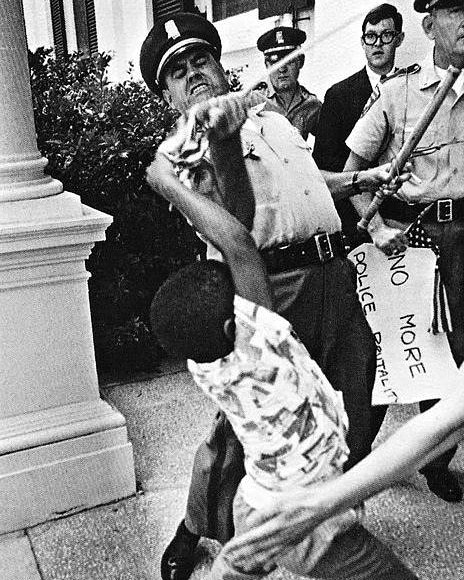
A policeman rips the American flag away from 5-year-old Anthony Quinn, Jackson, Mississippi, 1965. Photo by Matt Heron

“Wear a mask or go to jail” , California, 1918.
People stand together while wearing masks in an effort to protect themselves from the Spanish Flu. The 1918 Spanish flu killed up to 50 million people around the world and has been called “the mother of all pandemics”.
The 1920’s were a time of newfound freedom for women, especially in dress. However, the new fashion of slim, masculine, and curve-less bodies also created a new psychological pressure for women that had never before existed on such a grand scale - the phenomena of dieting, known then as “slimming” or “reducing.” Women could no longer depend on corsets, petticoats, hoops, and voluminous dresses to achieve the body ideal of the era. The new dresses freed women’s movements but did not flatter or hide the unsightly, be it body hair, breasts, or fat, and it was now a woman’s responsibility to change her body in order to fit the fashionable figure. Many women began to undergo rigorous dieting regimes and buy dubious products - the most horrific of which was probably tapeworms - in vain hopes of slimming down.
Joan Jacobs Brumberg’s book The Body Project highlights a 1920’s teenage girl’s diary and shows the obsession with thinness that was beginning to take hold of girl’s minds. “I’m so tired of being fat!…Three months in which to lose thirty pounds - but I’ll do it - or die in the attempt.” The girl lists how she will go about reducing - “No cake or pie or ice cream or cookies or candy or nuts or fruits or bread or potatoes or meats or anything.” The girl’s constant worry about her body would not be out of place in a contemporary diary, and shows that, although the corset was long-gone, a new type of body restriction had taken its place.
Post link
Girl newsies, 1909, Hartford, Connecticut. Taken by Lewis Hine (click for further details of each).
Girl newsies were less common, but, as these photographs show, they did exist. Hine traveled around America, taking pictures of child workers in an attempt to reform child labor laws. In this time period, some kids were forced into work early to help support their family, while others worked after school for pocket-money. He didn’t note which category these girls fell under, but their clothing seems to suggest it would have been the latter [x].
Post link


